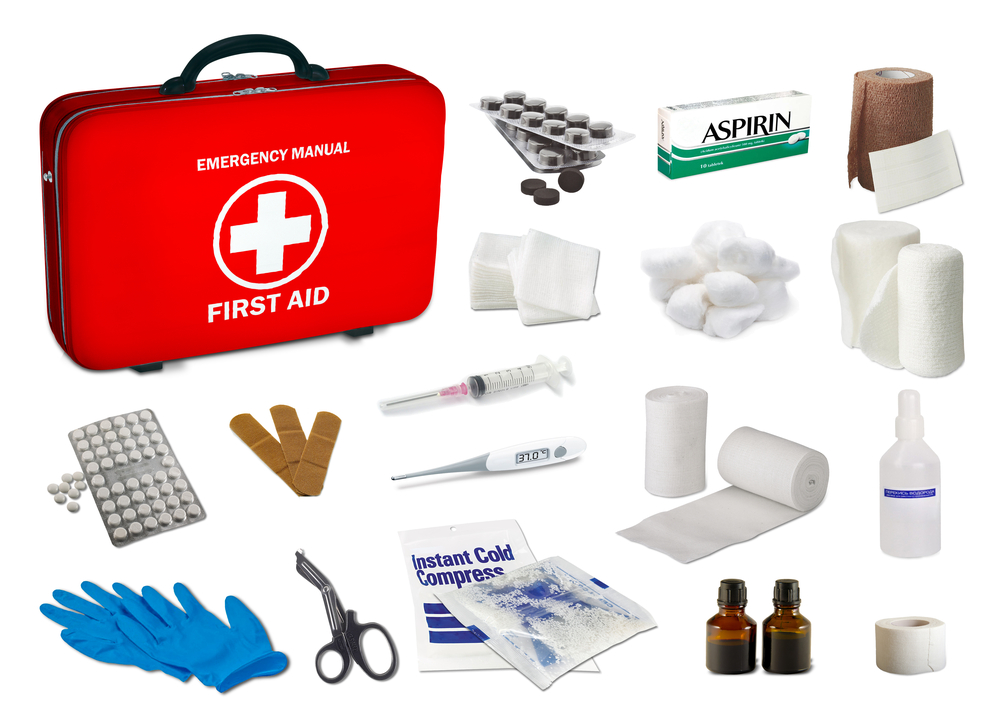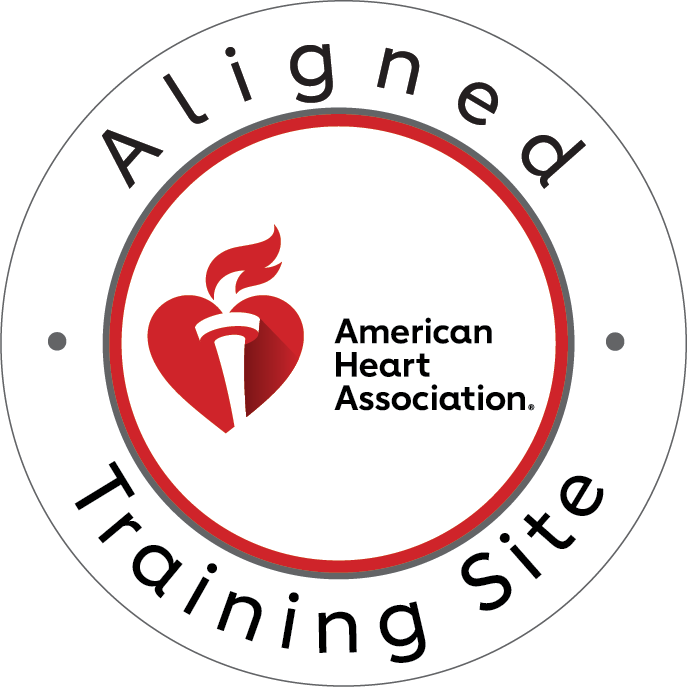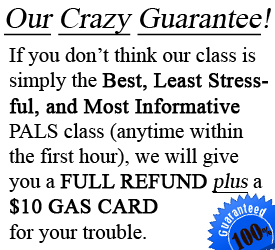Being prepared for emergencies can save lives. First aid kits serve as your first line of defense when accidents occur. Whether you’re at home, work, or traveling, having the right supplies readily available makes the difference between a minor incident and a major emergency.
The American Heart Association and American Red Cross recently released their first comprehensive update of first aid treatment recommendations since 2010, emphasizing the importance of proper emergency preparedness. Let’s explore what belongs in your first aid kits for different situations.
What Should Be in a First Aid Kit for Traveling?
Travel first aid kits require special consideration. You face unique risks and challenges when away from home. Space limitations and travel restrictions also affect what you can pack.
Essential Travel First Aid Kit Items
Your travel first aid kit should include basic wound care supplies. Pack adhesive bandages in various sizes, sterile gauze pads, and medical tape. Include antiseptic wipes and antibiotic ointment to prevent infections.
Pain relief medications are crucial for travel. Pack ibuprofen and acetaminophen in their original containers. Add any prescription medications you take regularly, plus extras in case of delays.
Environmental considerations matter when traveling. Include instant cold packs for injuries and burns. Pack sunscreen with SPF 30 or higher. Add insect repellent containing DEET to prevent bites and disease transmission.
Travel-specific items enhance your preparedness. Include thermometer strips that don’t contain glass. Pack disposable gloves and face masks. Add emergency contact information and insurance cards in waterproof containers.
International travel requires additional planning. Research destination-specific health risks and vaccination requirements. Pack water purification tablets if traveling to areas with questionable water quality. Include anti-diarrheal medications and oral rehydration salts.
What Should First Aid Kits for Work Include?
OSHA requires “adequate first aid supplies shall be readily available” in all workplaces, though specific requirements vary by industry. Current ANSI Z308.1-2021 standards remain unchanged for 2025, providing clear guidelines for workplace first aid kits.
Workplace First Aid Kit Essentials
Class B first aid kits must now include tourniquets, reflecting the importance of severe injury preparedness. This requirement highlights how workplace safety standards continue evolving.
Basic wound care forms the foundation of workplace kits. Include sterile gauze in multiple sizes, from 2×2 inches to 4×4 inches. Pack medical tape, scissors, and tweezers for wound management. Add elastic bandages for sprains and strains.
Eye care receives special attention in workplace settings. Include sterile saline solution for eye irrigation. Pack eye cups and eye pads for protection after injuries. Add instant cold compresses for swelling reduction.
Burn treatment supplies address common workplace hazards. Include burn gel or cool compresses specifically designed for thermal injuries. Pack non-adherent burn dressings to prevent further tissue damage.
Emergency medications support immediate care. Stock aspirin for cardiac events (unless contraindicated by company policy). Include antihistamines for allergic reactions. Add glucose tablets for diabetic emergencies.
Documentation and emergency information prove essential. Include emergency contact numbers for local hospitals and poison control. Add incident report forms for proper documentation. Pack emergency action plan summaries.
What Are 10 Things You Need in a First Aid Kit?
Every complete first aid kit contains these fundamental items. These essentials address the most common injuries and medical emergencies you’re likely to encounter.
- Adhesive Bandages: Various sizes from small strips to large patches. They protect minor cuts and scrapes from infection.
- Sterile Gauze Pads: Multiple sizes for covering wounds. They absorb blood and provide protective barriers.
- Medical Tape: Secures gauze and bandages in place. Choose hypoallergenic options for sensitive skin.
- Antiseptic Wipes: Clean wounds and prevent infection. Alcohol-based wipes work best for disinfection.
- Pain Relievers: Include both ibuprofen and acetaminophen. They address pain, inflammation, and fever.
- Disposable Gloves: Protect both patient and caregiver from contamination. Use nitrile gloves for latex allergies.
- Scissors: Cut tape, gauze, and clothing if necessary. Choose blunt-tip scissors for safety.
- Tweezers: Remove splinters and debris from wounds. Ensure they have fine, pointed tips.
- Instant Cold Pack: Reduce swelling and numb pain from injuries. Activate by squeezing or striking.
- Emergency Contact Information: List important phone numbers and medical information. Include poison control and local emergency services.
What Should You Include in First Aid Kits for Home Safety?
Home first aid kits require comprehensive supplies because you handle a wider range of potential injuries. Children, elderly family members, and household activities create diverse emergency scenarios.
Comprehensive Home First Aid Supplies
Wound care takes priority in home kits. Stock multiple sizes of adhesive bandages, including fabric and waterproof varieties. Include butterfly closures for deeper cuts that might need stitches. Pack plenty of sterile gauze pads and medical tape.
Medication storage requires careful consideration. Include children’s and adult formulations of fever reducers. Stock antihistamines for allergic reactions. Add anti-diarrheal medication and antacids for digestive issues. Store all medications in their original containers with expiration dates clearly visible.
Specialized tools enhance treatment capabilities. Include a thermometer for monitoring fevers. Pack a flashlight with extra batteries for emergencies. Add safety pins for securing bandages and slings.
Burns happen frequently in home environments. Include burn gel and non-stick burn pads. Pack aloe vera for minor burns and sunburn relief. Add a burn assessment chart to help determine severity.
Sprains and strains occur during household activities. Include elastic bandages in various widths. Pack instant cold packs for immediate treatment. Add triangular bandages for creating slings.
Family-specific items address individual needs. Include any prescription medications family members require. Pack emergency medical information cards for each person. Add specific items for infants or elderly family members if applicable.
Regular Maintenance and Updates
First aid kits require regular maintenance to remain effective. Check expiration dates quarterly and replace expired items immediately. Restock used supplies after each incident. Update emergency contact information annually.
Store your home first aid kit in a cool, dry place away from direct sunlight. Choose a location that’s easily accessible to adults but secure from children. Consider mounting the kit on a wall or placing it in a designated cabinet.
Training enhances kit effectiveness significantly. Take CPR and first aid courses to learn proper techniques. Practice using your supplies before emergencies occur. Ensure all family members know the kit’s location and basic contents.
The Importance of First Aid Training
Having supplies means nothing without proper training. Recent guidelines emphasize adapting educational strategies to local needs and diverse community demographics, highlighting the importance of comprehensive training programs.
CPR and first aid certification provide essential life-saving skills. These courses teach proper wound care, recognizing medical emergencies, and when to seek professional help. Regular refresher training ensures your skills stay current with evolving guidelines.
Conclusion
Proper first aid kit preparation saves lives and reduces injury severity. Whether at home, work, or traveling, having the right supplies readily available makes emergencies more manageable. Remember that supplies alone aren’t enough – proper training transforms you from bystander to lifesaver.
Regular maintenance keeps your first aid kits effective when emergencies strike. Check expiration dates, restock used items, and update information regularly. Most importantly, invest in proper training to use these supplies effectively.
Ready to Learn Life-Saving Skills?
Don’t wait for an emergency to realize you need proper training. CPR Columbus offers comprehensive CPR certification in Columbus and CPR and First Aid classes in Columbus through our American Heart Association training programs. Our stress-free, hands-on courses cover BLS for Healthcare Providers, ACLS, PALS, and CPR and First Aid certification.
Master the skills that complement your well-stocked first aid kit. Contact CPR Columbus today to schedule your certification class and become prepared to save lives in any situation.
Frequently Asked Questions
Q: How often should I replace items in my first aid kit?
Check your first aid kit every three months. Replace expired medications immediately and restock any used supplies. Most adhesive bandages and gauze pads don’t expire, but medications typically last 2-3 years. Keep a maintenance log to track expiration dates and replacement schedules.
Q: What’s the difference between home and workplace first aid kit requirements?
Workplace first aid kits must meet OSHA and ANSI standards, which require specific items like tourniquets in Class B kits. Home kits offer more flexibility and can include family-specific items like children’s medications or prescription drugs. Workplace kits focus on treating common occupational injuries, while home kits address broader household emergencies.
Q: Can I take my first aid kit on airplanes when traveling?
Yes, but with restrictions. Pack first aid supplies in checked luggage when possible. TSA allows most first aid items in carry-on bags, but sharp objects like scissors must be under 4 inches. Medications should remain in original containers. Liquid medications over 3.4 ounces require separate screening. Check current TSA guidelines before traveling.
Q: What training do I need to use first aid kit supplies effectively?
Basic CPR and first aid certification provide essential skills for using your supplies properly. These courses teach wound care, recognizing emergencies, and when to call professionals. While anyone can apply a bandage, proper training helps you assess injuries, provide appropriate care, and avoid causing additional harm. Refresh your training every two years to stay current.





